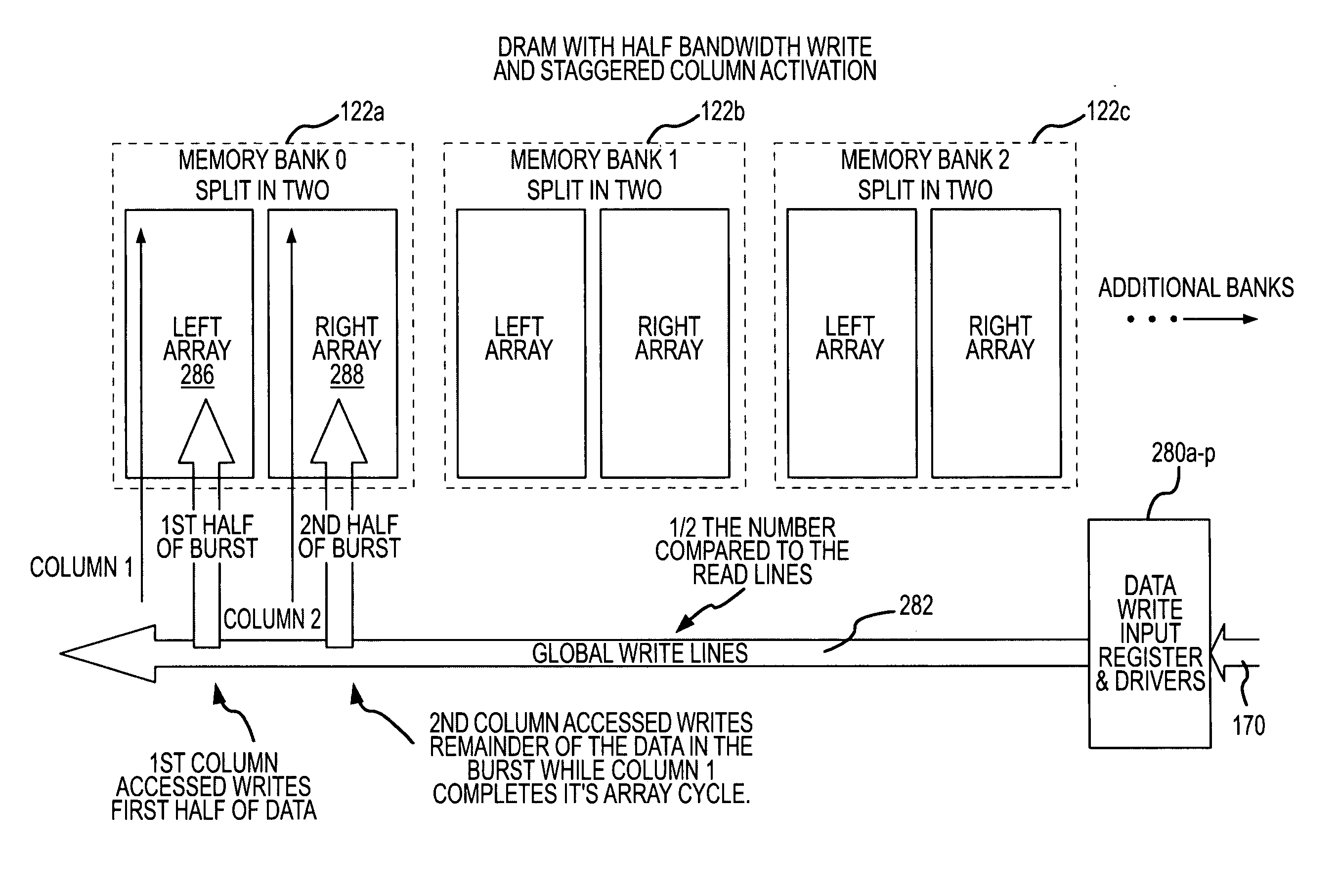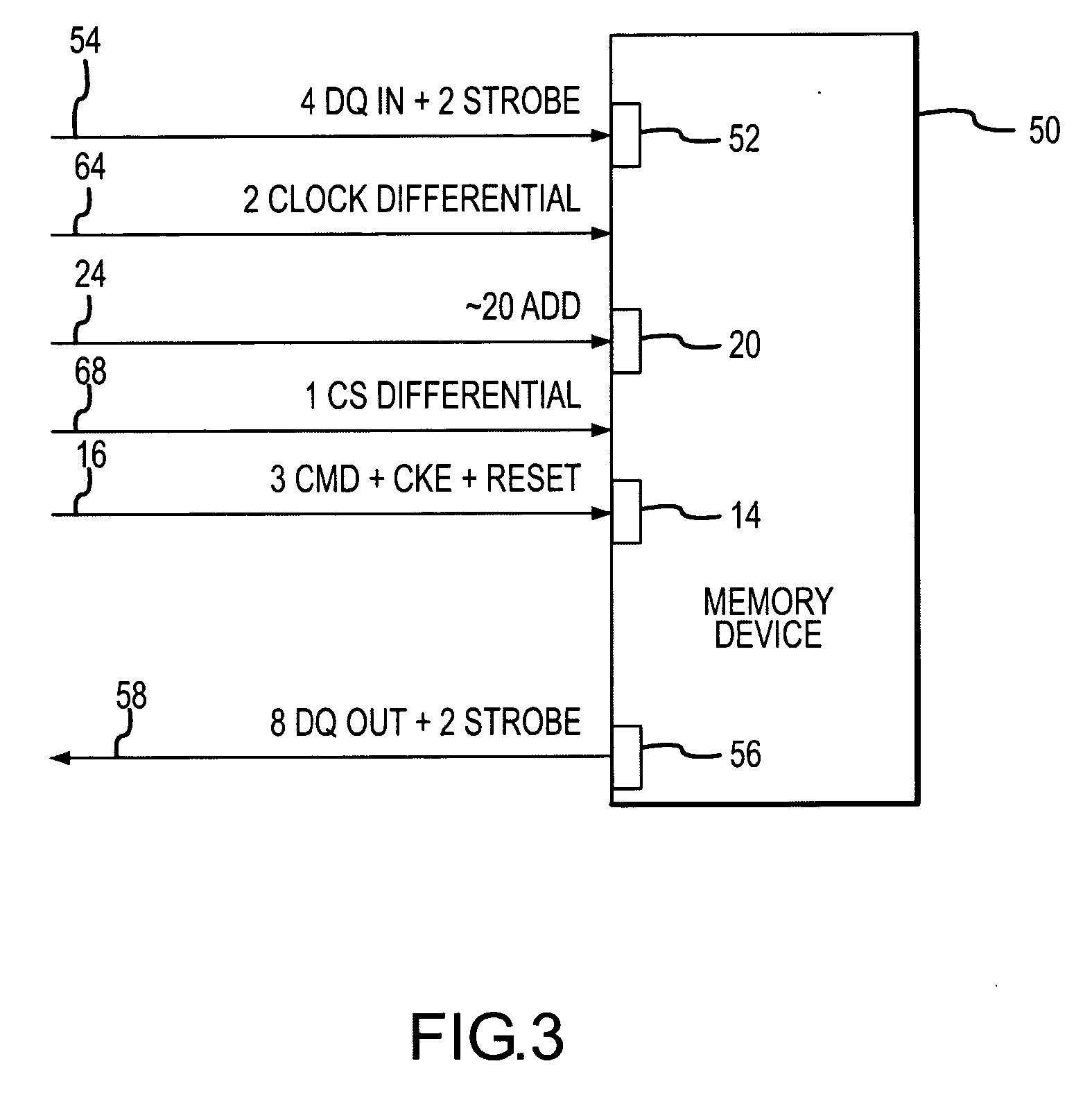Memory device and method having separate write data and read data buses
a memory device and data bus technology, applied in the field of memory devices, can solve the problems of increasing the memory devices have not been able to keep up with the increase in data bandwidth of memory controllers and memory data buses, and reducing hardware limitations adds cost, power, and/or size to the memory
- Summary
- Abstract
- Description
- Claims
- Application Information
AI Technical Summary
Problems solved by technology
Method used
Image
Examples
Embodiment Construction
[0025] A memory device 50 according to one embodiment of the invention is shown in FIG. 3. The memory device 50 may be a DRAM device, and SRAM device, a ROM device, a flash memory device, or some other type of memory device. The memory device 50, like the memory devices 10, 30, includes a set of command terminals 14 coupled to a command bus 16, In the example shown in FIG. 3, the command bus 16 has a width of five bits for coupling 3 command bits, a clock enable (“CKE”) signal, and a reset signal to the memory device 50. The memory device 50 also includes a set of address terminals 20 coupled to an address bus 24. The memory device 50, like the memory device 30, includes a set of write data terminals 52 coupled to a write data bus 54 and a set of read data terminals 56 coupled to a read data bus 58. However, unlike the write data bus 38 and read data bus 42 coupled to the memory device 30 as shown in FIG. 2, the width of the write data bus 54 is not the same as the width of the read...
PUM
 Login to View More
Login to View More Abstract
Description
Claims
Application Information
 Login to View More
Login to View More - R&D
- Intellectual Property
- Life Sciences
- Materials
- Tech Scout
- Unparalleled Data Quality
- Higher Quality Content
- 60% Fewer Hallucinations
Browse by: Latest US Patents, China's latest patents, Technical Efficacy Thesaurus, Application Domain, Technology Topic, Popular Technical Reports.
© 2025 PatSnap. All rights reserved.Legal|Privacy policy|Modern Slavery Act Transparency Statement|Sitemap|About US| Contact US: help@patsnap.com



